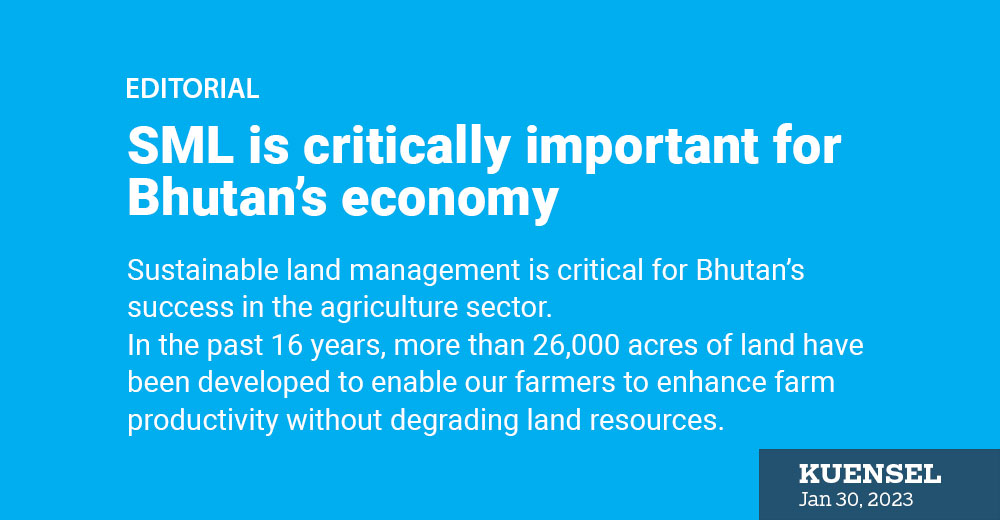Sustainable land management is critical for Bhutan’s success in the agriculture sector.
In the past 16 years, more than 26,000 acres of land have been developed to enable our farmers to enhance farm productivity without degrading land resources.
This is important because of a small percentage of arable land in the country—only 2.93 percent of the land constitutes cultivated agricultural land from a total land cover of 38,394sqkm.
Bhutan’s agriculture development stands on sound footing. But there is the need to recognise that the agriculture sector has arrived at a crossroads.
Going by the focus, however, do we produce enough to feed ourselves, or, are our production systems aimed at export markets?
Sustainable land management is a long-term investment which perhaps is why many people are discouraged to invest now.
Human-wildlife conflict is a major issue facing the farming communities in the country today. Prime minister, in his recent State of the Nation Report, said that annually, farmers suffer crop loss of about 43 percent due to human-wildlife conflicts.
The government has approved Nu 500 million to construct chain-link fencing across the country. About 116.81 kilometres of chain link fencing worth Nu 198.577 million will be constructed in the first phase.
How this initiative will turn Bhutan’s agriculture sector is yet to be seen but this is a welcome development in the sector.
The prime minister said that we now have Gewog Tiger Conservation Tshogpa (GTCT) in six human-tiger conflict hotspots—gewogs of Nubi, Tangsibji, Langthel and Korphu in Trongsa, Nangkor in Zhemgang, and Chumey in Bumthang. Under the programme, 605 members and 1,149 livestock have been insured.
Similarly, to mitigate crop damage by elephants in the south of the country conflict, 27.5 kilometres of electric fence, animal intrusion detection, repellent system, and portable solar corral have been installed in Sarpang.
Despite various plans and programmes, however, the overall production rate seems to be decreasing. That is why sustainable land management is very important.
We might do well to do away with useless demagoguery. If there is a rise in productivity but a fall in production, Bhutan’s agriculture is in muddy waters. The backbone of Bhutan’s economy is agriculture.
If agriculture is affected by factors such as human-wildlife conflict, water shortage, rural-urban migration, labour shortage, land fragmentation and climate change, among others, there is a need for a cross-sectoral approach to solving the problem.
The sooner these problems are addressed, the better for the country’s economy.
Agriculture is our strength and we must take advantage of the sector. And this must begin with a heavy and timely investment.


